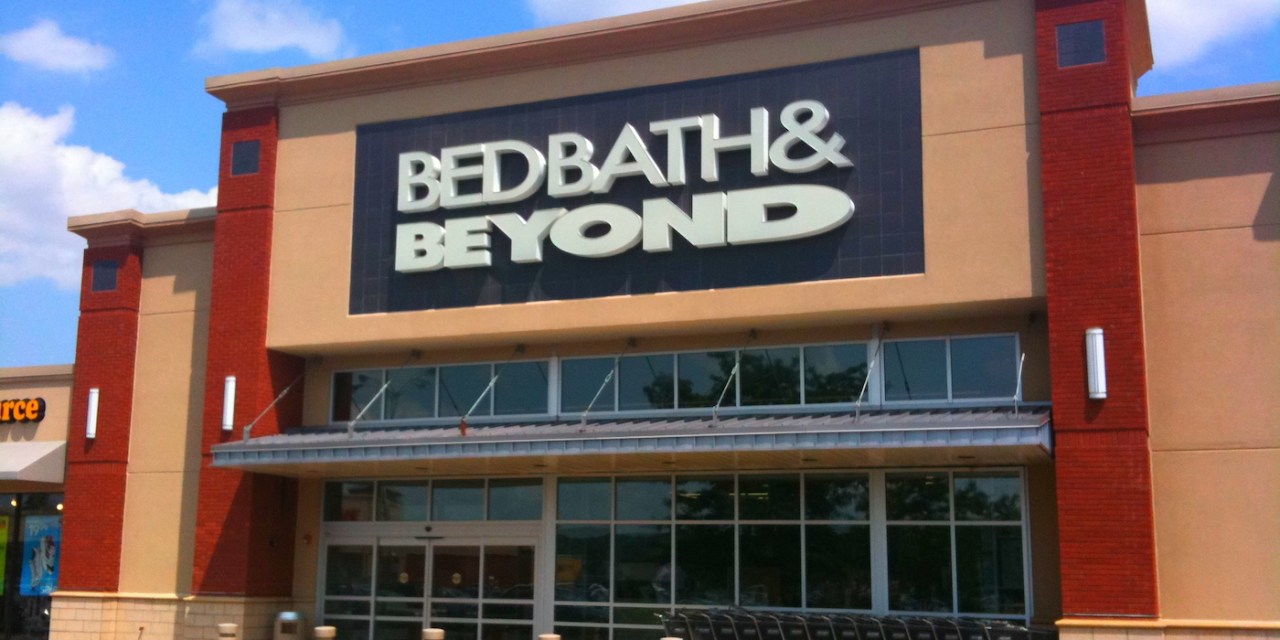Bed Bath & Beyond’s grand turnaround plan: Make stores more inspirational, rely less on coupons

After one year on the job, Bed Bath & Beyond CEO Mark Tritton has solidified a three-year plan that he hopes will turn the faltering home goods chain around.
At a virtual investor day presentation on Wednesday, Tritton laid out the steps he and his executive team plan to take to return Bed Bath & Beyond to consistent sales growth, some of which have already been taken during the pandemic. The retailer plans to launch ten new private label brands over the next 18 months, in order to make its assortment of products in stores more differentiated. The company also is in the process of remodeling its stores — getting rid of some products the company thinks are redundant and instead dedicating more floor space to showcasing how different products can fit together. And, Bed Bath & Beyond said it plans to rely less on coupons, and instead offer lower in-store prices or tout convenience through services like curbside pickup, to drive sales.
During the investor day Tritton and other executives kept coming back to one big area for improvement — that 35% of customers only buy one item or one category at Bed Bath & Beyond. This data was gleaned from the company’s point-of-sale analytics, as well as an April survey of more than 15,000 Bed Bath & Beyond customers. The company’s new thesis is that if it revamps merchandise it carries in store — and how it is displayed — the retailer can get those customers to buy more than just one or two items.
“The company has a very good traffic level of 37 million customers, so it is a matter of getting those customers to shop more frequently and buy more frequently,” said Seth Basham, managing director of equity research with Wedbush Securities.
Bed Bath & Beyond has benefitted in recent months from people spending more money on redecorating their homes. At its second quarter earnings at the beginning of October, it reported that comparable sales were up 6% year-over-year. Meanwhile, digital sales were up 80%, thanks in part to Bed Bath & Beyond rolling out curbside pickup and buy online pickup in-store for the first time to all stores. It was a remarkable reversal of fortune for the company, after reporting nearly four straight years of same-store sales decline. But the company isn’t betting on the redecorating fever to fuel it sales growth forever.
Updated store layouts
Joe Hartsig, Bed Bath & Beyond’s chief merchandising officer showed investors how the company plans to remodel stores to encourage more sales, using photos from one store Bed Bath & Beyond has remodeled in New Jersey. Historically, Bed Bath & Beyond has been known for its “floor to ceiling” displays, in which Bed Bath & Beyond would display, say, all of the different kitchen tools it would carry on one display, stretching from the bottom of the floor to almost the top of the ceiling.
In the remodeled stores, Bed Bath & Beyond would get rid of those towers to make more room for product displays — in bedding, for example, putting a few beds on the floor that show different ways customers can mix and match blankets, pillows, and sheets.
“In the past we were too focused on functional, item-led merchandising,” said Hartsig. “We’re shifting to a more inspirational experience, shifting from items to ideas.”
Tritton said that in total, the company plans to spend $250 million over the next three years to remodel 450 stores that generate 60% of its revenue.
Fewer coupons
Hartsig said the company is also trying to revamp signage in stores in order to make it easier for customers to understand pricing “at first glance” — and rely less on coupons. He added that the hope is that by negotiating better with its vendors, and offering a cheaper in-store price than customers are used to seeing, the company can lessen its reliance on coupons and promotions to drive sales.
It’s worth noting that JC Penney tried a similar approach under then-CEO Ron Johnson in 2011. The department store chain got rid of coupons altogether, and in one earnings report following the decision, comparable store sales fell 18.9% year-over-year. Then-COO Michael Kramer said at the time, “we did not realize how deep some of the customers were into [coupons].” JCPenney later brought back coupons
In order to have the capital to remodel stores and make other improvements, Bed Bath & Beyond has undertaken some drastic cost-cutting measures, laying off about 10% of its corporate staff in March, and announcing in July that it would be closing roughly 200 stores of its more than 900 stores over the next two years. Bed Bath & Beyond has also downsized by selling off One Kings Lane, a home decor startup it bought in 2014, as well as its Christmas Tree Shops chain.
Still, the turnaround at Bed Bath & Beyond is going to take some time. The company is projecting that it will report “stable” sales in fiscal year 2021, before returning to low single-to-mid digit sales growth in 2023.
“I think they are being extremely conservative there,” said Basham. It remains to be seen whether or not the company will be able to match the huge sales gains it reported over the summer. But when asked what he thought about the turnaround plan presented by Bed Bath & Beyond: “Mark and his team certainly know what the problems are, and have a plan to solve them.”
Photo by Mike Mozart on Flickr

